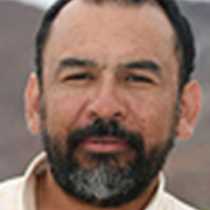Sand Dollar Beach and Canal de Soledad (Hull Canal), Magdalena Bay
The sand dunes of Magdalena Island (and the associated famous bay and open Pacific Ocean) always have something interesting to notice. Today, in the beginning of our voyage among the great whales, we explored and walked over this interesting environment to the location known as Sand Dollar Beach (on the western side of the island), not far away from the port of San Carlos. We then realized why, since the first times of navigation into the Gulf of California and the Pacific shores of the Baja peninsula, the sailors often referred to the waters of the gulf as "El Mar Bermejo" (the Vermilion Sea). This apparently bizarre name was given by the first serious Spanish navigator, Francisco de Ulloa, who was sent in 1539 by Hernando Cortes. For centuries, diverse historical scholars, naturalists, biologists and writers wondered why it was given that name, and among the many explanations, there was one even referring to the sky colors during the beautiful sunrises and sunsets in the area.
The true fact is that diverse micro and macro organisms in the water, ranging from red macroscopic algae to plankton, and even pelagic crabs, can be the real origin of the name Mar Bermejo, as they taint the water with diverse tones of red. To our surprise, this morning the crashing waves of the Pacific Ocean were painted with brown-red color (photo), giving the impression of bleeding water.
In the afternoon we navigated along the Canal de la Soledad to reach tomorrow's whale watching location.
The sand dunes of Magdalena Island (and the associated famous bay and open Pacific Ocean) always have something interesting to notice. Today, in the beginning of our voyage among the great whales, we explored and walked over this interesting environment to the location known as Sand Dollar Beach (on the western side of the island), not far away from the port of San Carlos. We then realized why, since the first times of navigation into the Gulf of California and the Pacific shores of the Baja peninsula, the sailors often referred to the waters of the gulf as "El Mar Bermejo" (the Vermilion Sea). This apparently bizarre name was given by the first serious Spanish navigator, Francisco de Ulloa, who was sent in 1539 by Hernando Cortes. For centuries, diverse historical scholars, naturalists, biologists and writers wondered why it was given that name, and among the many explanations, there was one even referring to the sky colors during the beautiful sunrises and sunsets in the area.
The true fact is that diverse micro and macro organisms in the water, ranging from red macroscopic algae to plankton, and even pelagic crabs, can be the real origin of the name Mar Bermejo, as they taint the water with diverse tones of red. To our surprise, this morning the crashing waves of the Pacific Ocean were painted with brown-red color (photo), giving the impression of bleeding water.
In the afternoon we navigated along the Canal de la Soledad to reach tomorrow's whale watching location.




